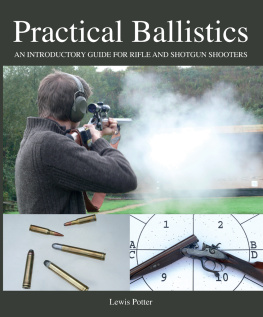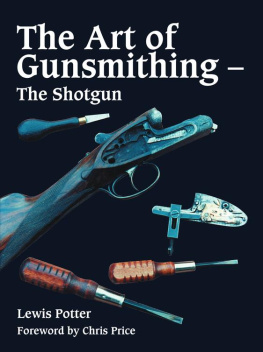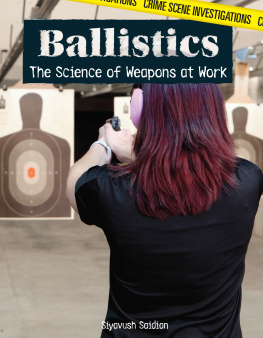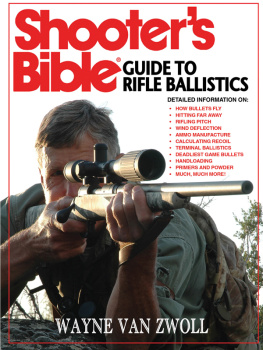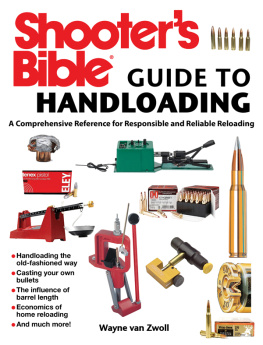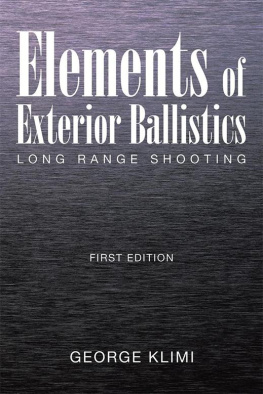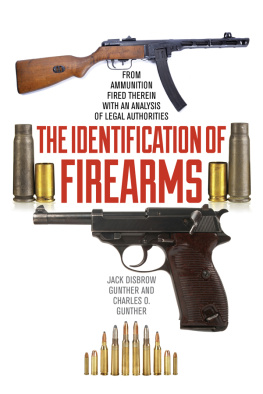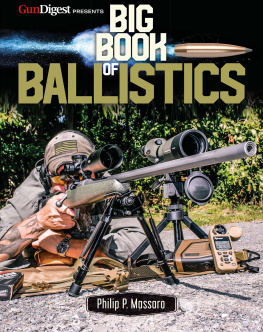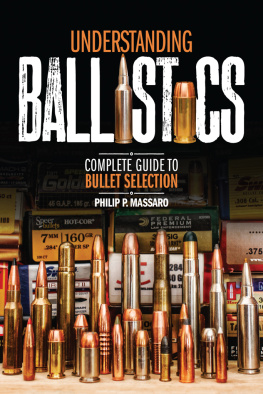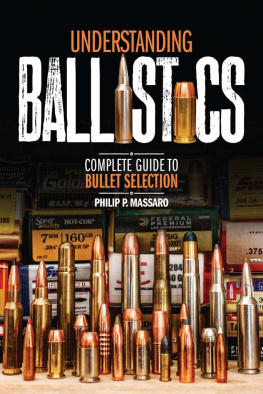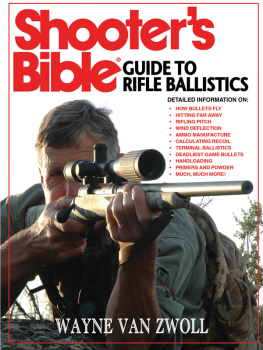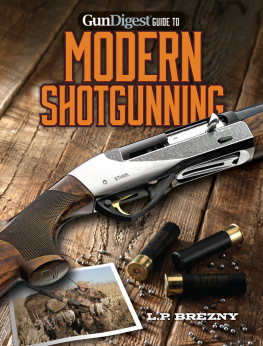Practical Ballistics
AN INTRODUCTORY GUIDE FOR RIFLE AND SHOTGUN SHOOTERS
LEWIS POTTER

THE CROWOOD PRESS
First published in 2014 by
The Crowood Press Ltd
Ramsbury, Marlborough
Wiltshire SN8 2HR
www.crowood.com
This e-book first published in 2014
Lewis Potter 2014
All rights reserved. No part of this publication may be reproduced or transmitted in any form or by any means, electronic or mechanical, including photocopy, recording, or any information storage and retrieval system, without permission in writing from the publishers.
British Library Cataloguing-in-Publication Data
A catalogue record for this book is available from the British Library.
ISBN: 978 1 84797 738 0
Disclaimer
The author and the publisher do not accept any responsibility in any manner whatsoever for any error or omission, or any loss, damage, injury, adverse outcome, or liability of any kind incurred as a result of the use of any of the information contained in this book, or reliance upon it. If in doubt about any aspect of ballistics readers are advised to seek professional advice.
All images are by the author except where otherwise stated.
Contents
A book, especially with technical content, is rarely the work of one individual and most authors are only too glad of help, advice and assistance offered by others, from reviewing the manuscript to help with practical testing.
I therefore acknowledge the kind help and assistance from the staff of the Birmingham Proof House, the Greensleeves Shooting Club, Paul Edmunds, Paul Harding, Patrick and Paul Faulkner, Alan Cox, Geoff Paskin, Martin Taylor and my son, Dan Walker. Special thanks go to Chris Price, who, for the third time, volunteered to review a manuscript for me; also Derek Allsop and Dr Geoffrey Kolbe, who gave invaluable advice; I also appreciate the kind help given by Eley Hawk Ltd.
I am, as always, extremely grateful to my wife, Sue, who, for this fifth book of mine, has worked so hard converting my ever-increasingly scruffy handwriting into a legible typed manuscript.
I hope I have not failed to thank anyone, but if I have please accept my apologies as any such oversight will be down to my deficient memory,which I find does not improve with age.
The idea behind this book was to make the fairly complex world of ballistics easier to understand, and to relate in a practical manner to the kind of use the sportsman or target shooter has for their rifle and ammunition. It is nonetheless a subject that does require a degree of calculation, hence the fairly simple formulae includedto enhance understanding of the principles involved.
If there is a single conclusion from these writings it is that there is no such thing as the perfect all-round cartridge, although some may come close for general target and live game use. However, when it comes to bullet design it is a very different matter, and we are drawn inevitably to accept that different designs can have widely different applications to perform at their best. So often it is a case of horses for courses.
I have included reference to black powder firearms and the associated large calibre heavy bullets, as they have their uses even in a world dominated by high velocities and pointed bullets. The older technology tends to be a neglected subject, which I feel is a shame as it is all of interest and the basis of what was to come later.
In the same manner it was most useful, I believed, to include ballistic matters concerning the smooth-bored shotgun. All too often rifled and smooth-bored firearms are treated at different subjects, although a lot of shooters use both. I trust I have made the world of ballistics a little easier to understand and especially the practical application. That, however, is for you, the reader, to judge.
LASP 2013
Chapter 1
Pure ballistics tends to be thought of as a dry subject typified by complex formulae, the sort of specialization once described as knowing more and more about less and less. This is a little unkind perhaps, and some understanding of basic calculations is essential to have a reasonable comprehension of the subject, but what many shooters want to know is on a very practical level, such as if I alter A, how does it affect B? quite simply, what factors affect performance and accuracy. These can be many, apart from the obvious, such as rifling type and twist rate, bullet form and weight, right through the gamut of problems including head space, deformed cartridge cases and misshapen bullets.
Therefore this book is mainly about the practical aspects of ballistics: what affects performance and how to improve that, while hopefully avoiding some of the pitfalls. To get a better understanding of this it is first useful to know something of the development of the bullet and cartridge.
BASIC MUZZLE-LOADING FORMS
The bullet was at first a simple lead ball, its accuracy of manufacture limited by the precision or otherwise of the mould and the skill of the maker. Having examined old ball moulds one comes to the conclusion that it was, for many years, an imperfectly formed but nonetheless practical projectile, simply the best there was in the early days of firearms development. Just when the ball originated is difficult to establish, but it has probably been in use for around seven centuries as it is still used today.
In its early use in smooth-bore guns the ball would sit either directly against the propellant (black) powder, or between an over-powder wad or wadding with a further wad on top of the ball to prevent it rolling out of the barrel if the gun were held with the muzzle at a depressed angle. An alternative to this would have been to wrap the ball in a cloth patch to make it a snug fit in the bore, which, as we shall see in a later chapter, can have a remarkably detrimental effect on accuracy.
While originally the propellant gun powder (black powder) was held in bulk in a separate container typically made from wood or horn and later copper or brass, one quick loading development (a relative term) was individual powder charges in stoppered containers. This effectively was the start of the evolution of the cartridge, and was followed by the first almost self-contained cartridge with the ball at one end of a sealed paper tube and the powder behind it. The British used this system for the famous .75in-calibre flintlock musket affectionately known as Brown Bess.
The procedure was to bite or tear off paper from the cartridge and pour a small quantity of powder into the pan, close it, then pour the rest down the barrel followed by ramming home the ball in its paper tube that then acted as wadding. Reputedly some four shots a minute could be achieved with much practice where volume of fire, not accuracy, was the most desirable attribute.
The problem with a rifled muzzle-loading firearm is that ideally the ball needs to be sized to fully engage the rifling at the breech end of the barrel. This means hard work loading, including the use of a mallet on the ramrod or a short starter rod to get the ball to engage the rifling at the muzzle. Then there are other complications, such as most muzzle-loading barrels would have been finished prior to the addition of the rifling by a process known as spill boring. Spill boring produces a tapered bore, the amount dependent upon the number of passes of the tool, how much material is removed, and the length of the barrel, but this taper can vary from a few tenths of thousandths of an inch to two to three thousandths.

